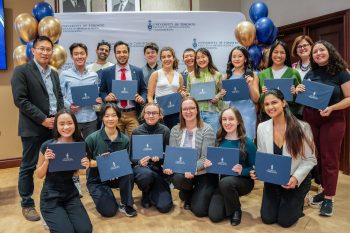Being able to move and communicate with the world has long been a major hurdle for children living with severe physical disabilities. Thought cognitively capable, they have few ways of expressing themselves to, and moving about in the outside world. However, advances in computer-based technology have allowed researchers to find innovative ways to help liberate these children, letting them interact and contribute with the wider society.
One of these researchers, Eric Wan (CompE 1T0), currently working on his master’s degree in Electrical, Computer and Biomedical Engineering at the University of Toronto, spends most of his days in the paediatric engineering research wing at The Bloorview Research Institute. His work involves designing new ways to improve the quality of lives of children living with severe disabilities.
He started programming when he was eight years old and since then, he enthuses, it has been his passion. “I really love it.”
His zeal is apparent and fruitful. As part of his undergraduate thesis, Wan created software for an award-winning “hum-activated” wheelchair. A child can power the wheelchair by simply making high- or low-pitched humming sounds. A vocal chord vibration sensor distinguishes between the different pitches to change direction. A major advantage of this wheelchair is that it drowns out unnecessary background noise such as street traffic or voices of people near by.



